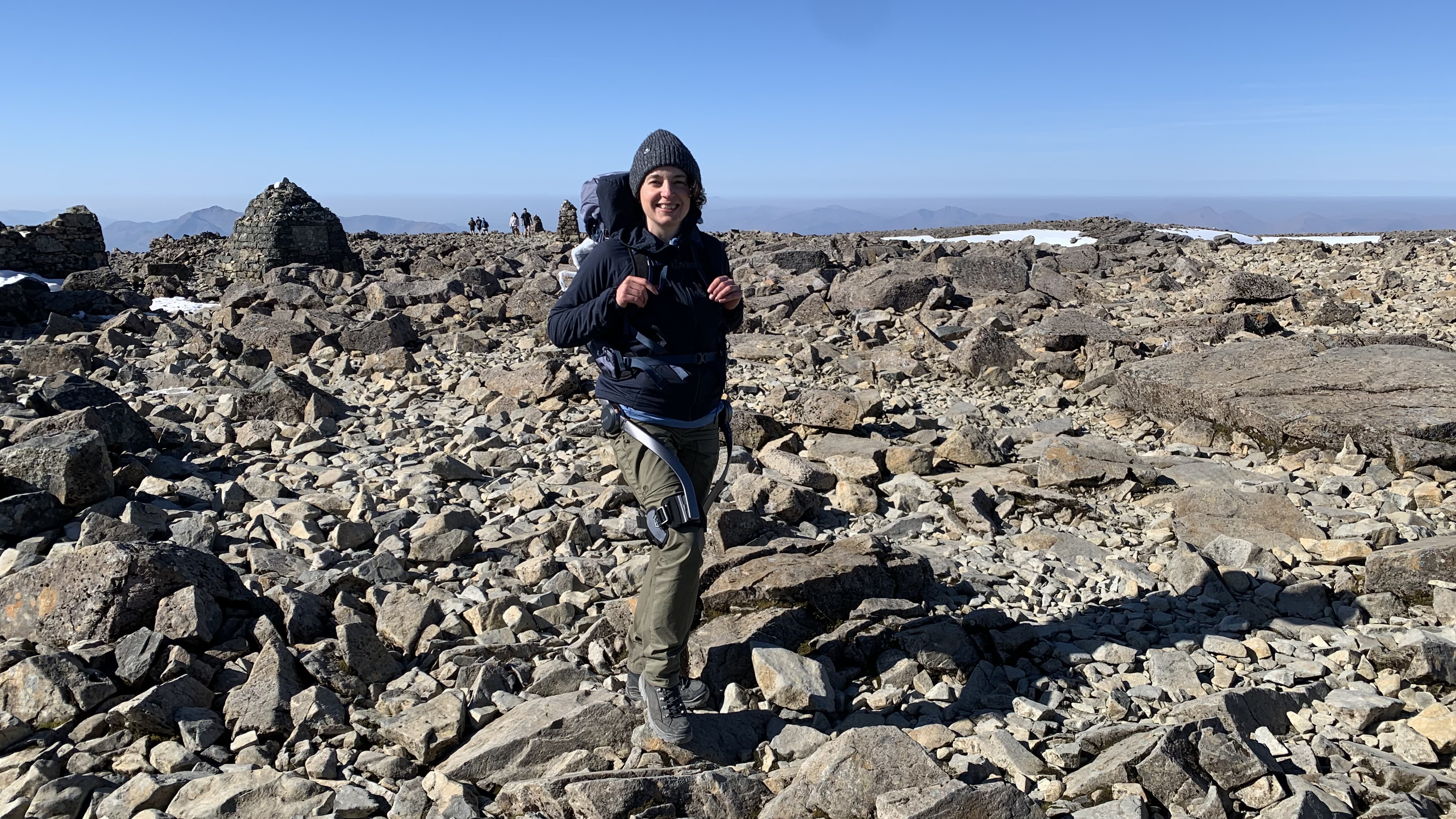The best gaiters for hiking and trail running: rugged leg protection for wet weather adventures
Our pick the best gaiters, tested and recommended for fast-moving trail running and snow-stomping
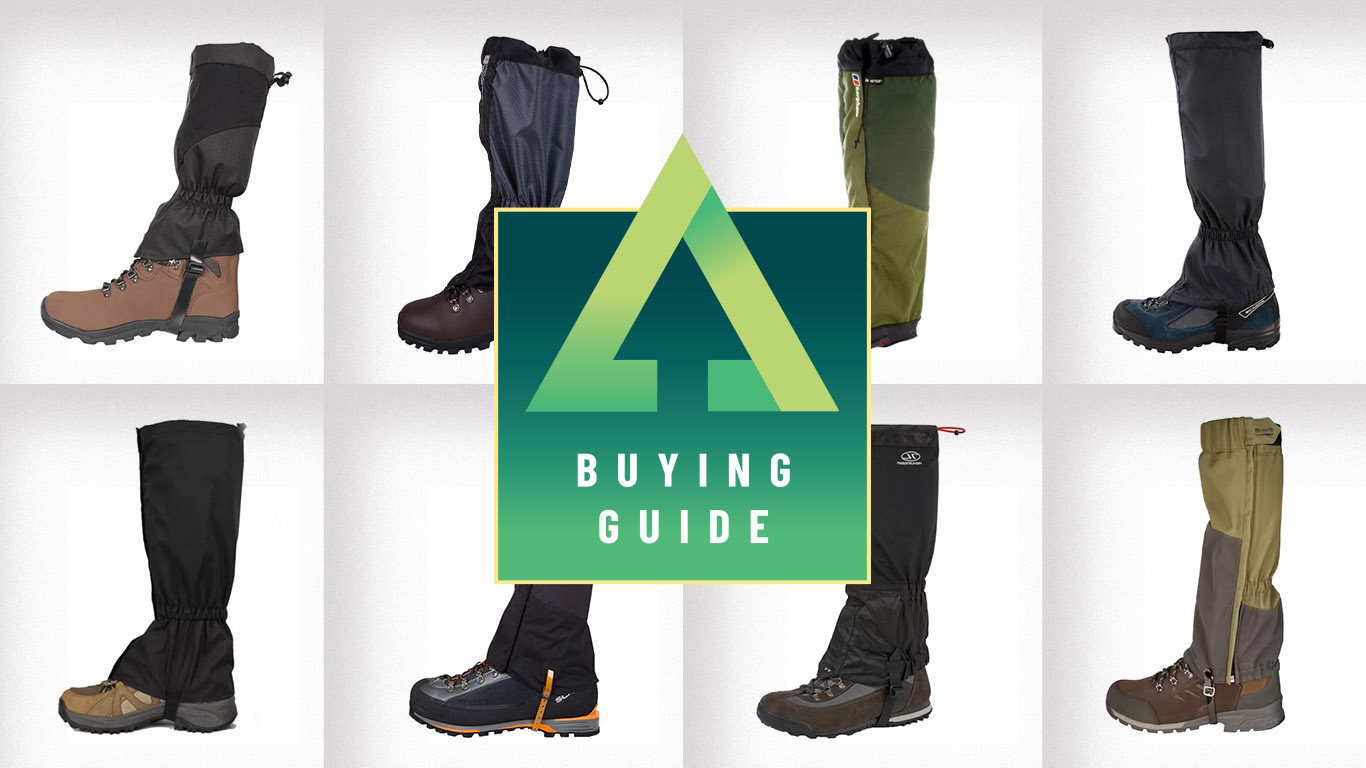
The best gaiters are like lightweight armor for your feet. If you’ve ever finished a walk with waterlogged hiking boots or had to stop and empty a pesky pebble out of your best trail running shoes or most comfortable trail running shoes midway through a session, then it may well be worth considering investing in a pair of gaiters. After all, moisture and debris have a way of sneaking into even the best-fitting footwear and waterproof socks alone aren’t the answer.
If you’re unfamiliar with gaiters, they are worn over your footwear, covering the ankles and often the lower legs too, usually to mid-calf but sometimes up to the knees. Gaiters are generally made from hard-wearing fabrics such as nylon or polyester and often feature a waterproof-breathable membrane for additional weather protection. Some fasten solely to the laces of your boots or shoes via a hook, while others have an additional sturdy strap that secures under the foot. They generally have top drawcord or buckles for adjustment and may also be elasticated to ensure a snug fit.
The best gaiters for hiking and trail running
You can trust Advnture
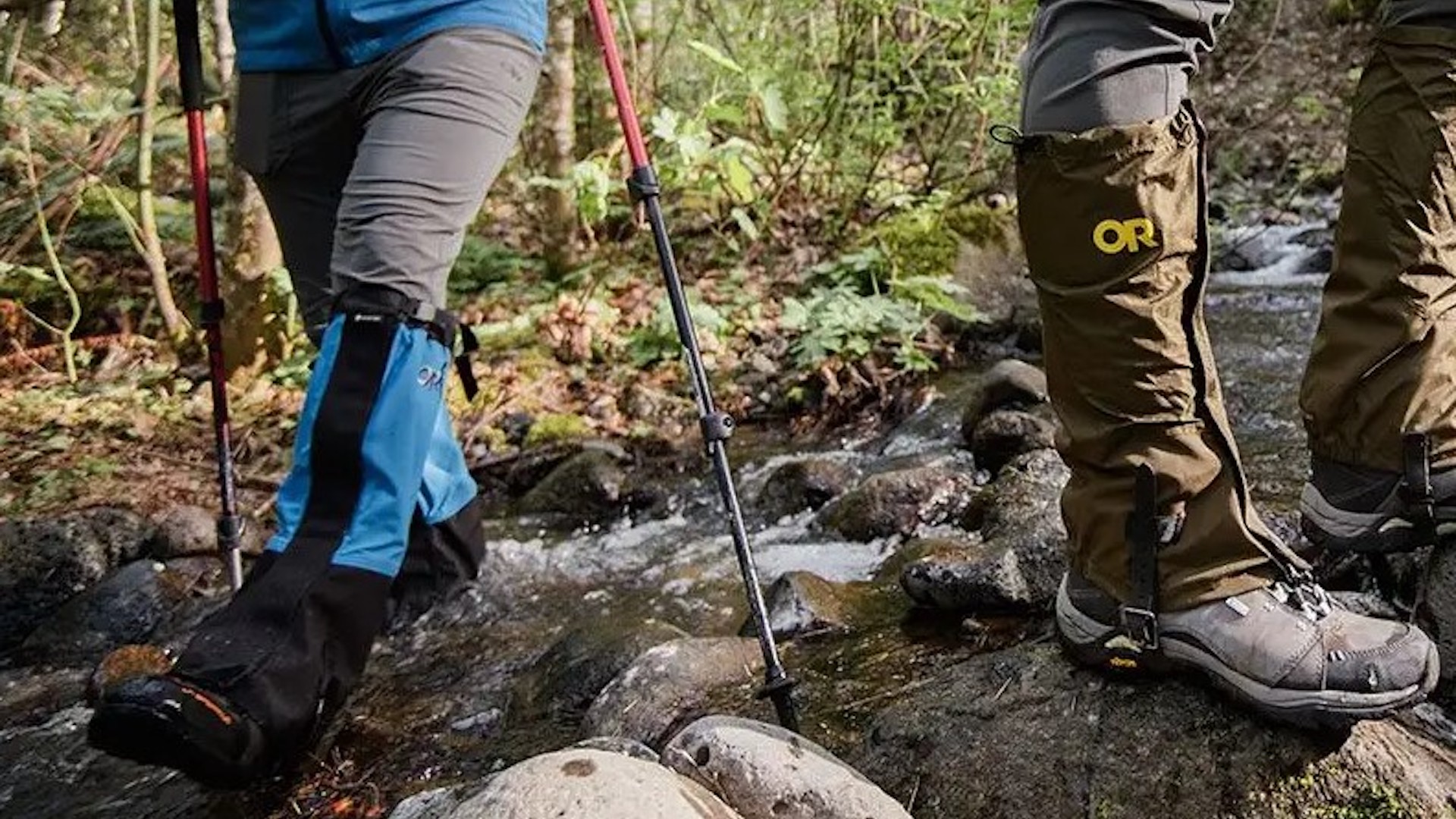
Specifications
Reasons to buy
Reasons to avoid
Outdoor Research’s Crocodiles have been around for years and are now widely regarded as the benchmark outdoor gaiter, especially in the USA. Extending to just below the knee, and available in a wide range of fits including dedicated women’s sizes, they provide full coverage and protection as well as a fairly close, snug fit that effectively fends off snow, moisture and trail debris. They feature a 70-denier nylon upper panel backed with a three-layer Gore-Tex waterproof-breathable membrane.
The lower section employs abrasion-resistant Cordura nylon, a 1,000-denier woven packcloth. The instep strap feels seriously tough and other elements are just as rugged. On test, they proved to be reliable performers. We trudged through mud, bog and all sorts of other muck, and our boots stayed dry throughout. Since they’re designed as an all-season gaiter, we’d be equally happy to trust them in snow, slush and talus when winter rolls around.
The heavy-duty build means these aren’t the lightest or most breathable gaiters around, but that’s the price for increased protection and longer life.
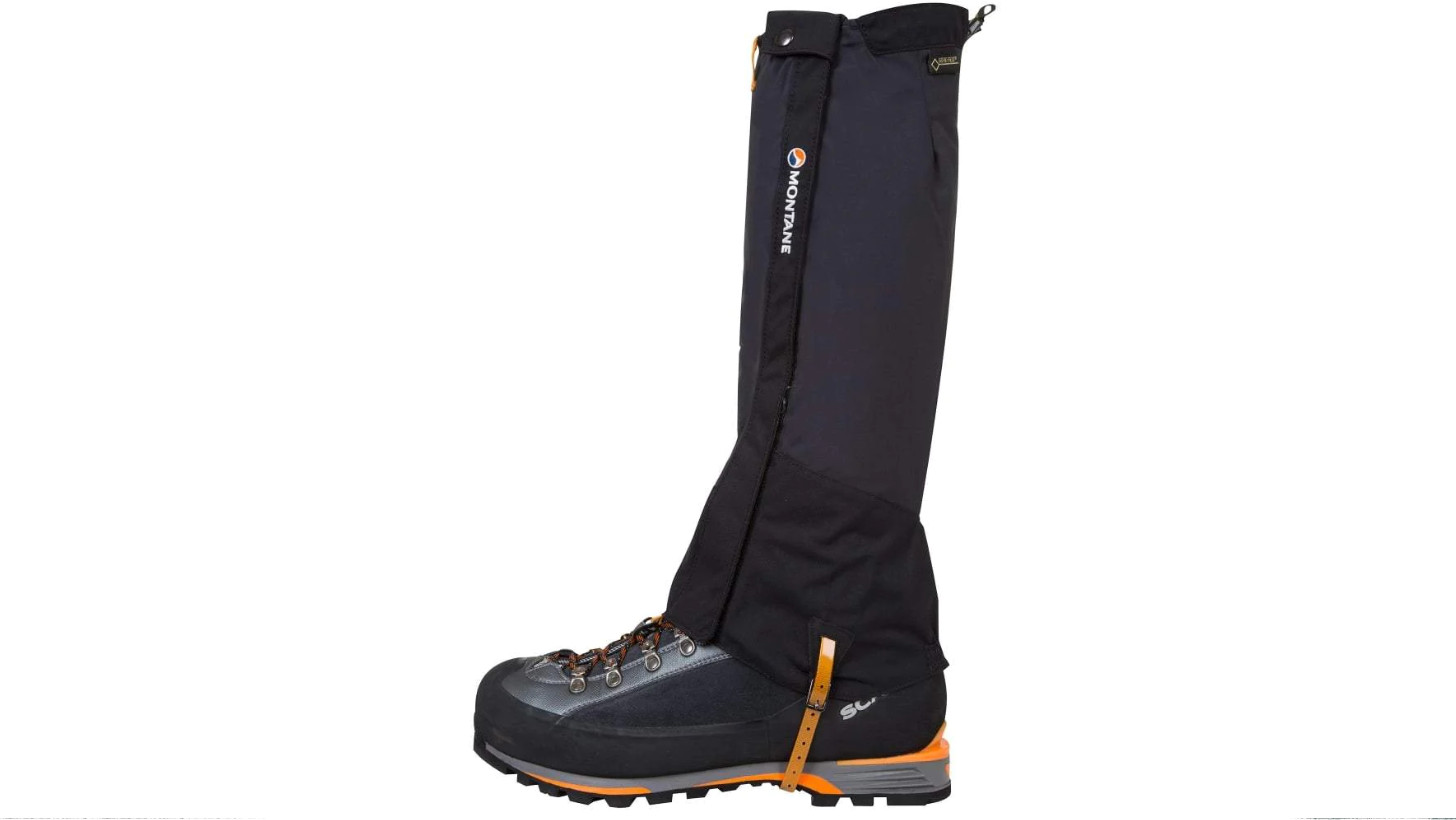
Specifications
Reasons to buy
Reasons to avoid
Balancing low weight with top-level waterproofing and breathability, Montane’s Endurance Pro Gaiters make use of Gore-Tex Pro fabric, with a 70-denier nylon face. They’re reinforced with additional nylon overlays around the base of the ankle and lower leg for added durability. They have a close and precise fit, so these gaiters work well in more technical scrambling and mountaineering scenarios as well as for general hillwalking. The clever design permits a wide range of movement thanks to a slightly offset front closure that permits increased ankle articulation.
On test, these gaiters were used and abused all over the UK, from summer tramps through the peat bogs of the Peak District to winter mountaineering routes in the Cairngorms. They’ve generally held up well, proving to be far lighter and more comfortable to wear than burlier, bulkier styles. In fact, their best quality, aside from the neat and precise fit, is that once you’ve got them on you tend to forget you’re wearing them – something that can’t be said of heavier gaiters, which tend to be both hotter and sweatier. For general three-season hillwalking, scrambling and mountaineering in wet conditions or tricky terrain, these are a great pick.
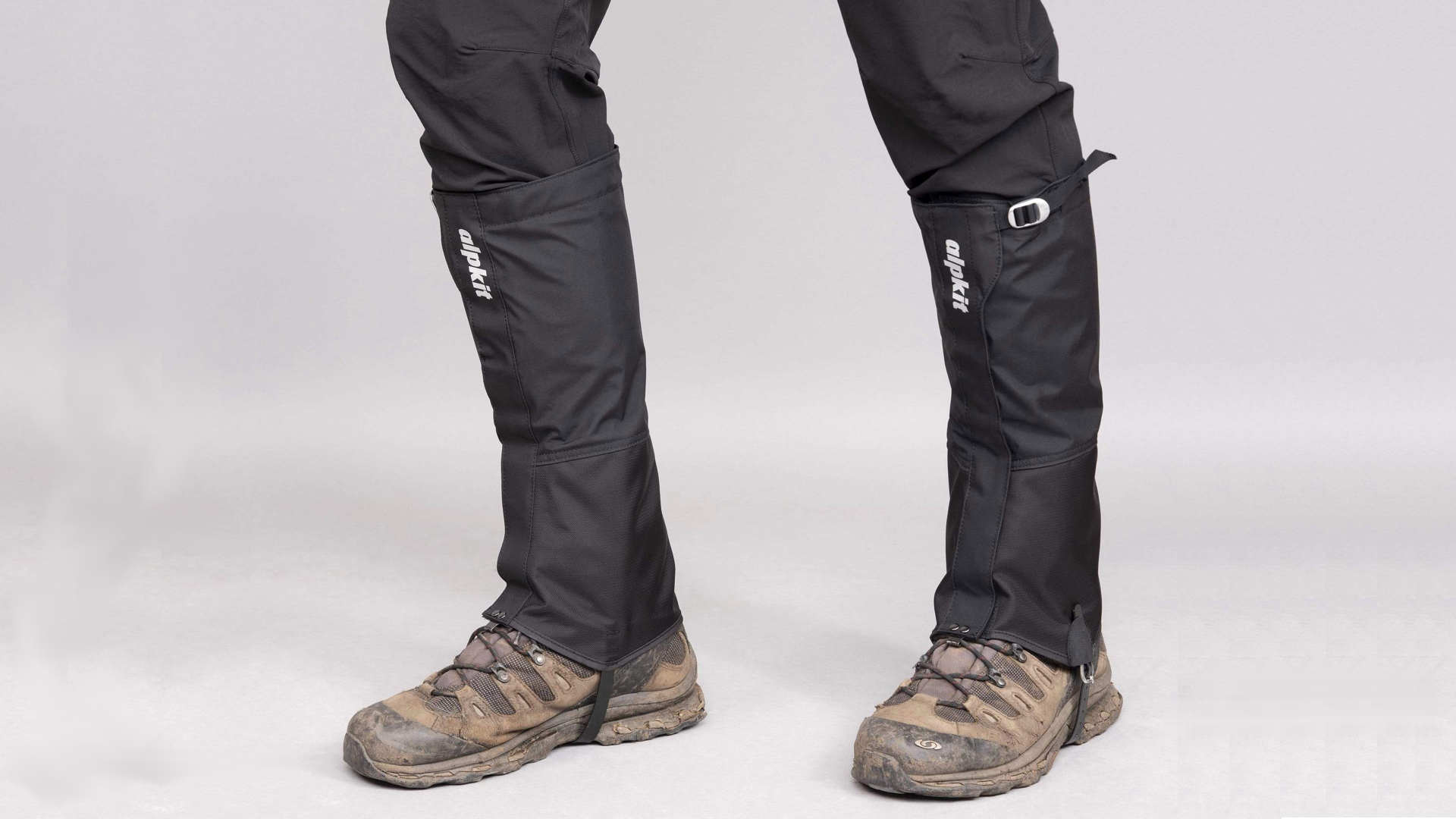
Specifications
Reasons to buy
Reasons to avoid
With a similar design and construction to higher-priced models, these gaiters from UK brand Alpkit offer plenty of value. The high cut extends to the top of the calves, promising full protection from mud and muck. They’re also extremely lightweight, thanks to a weight-conscious 50-denier nylon upper panel. The lower section is made from robust 420-denier Cordura fabric with a PU coating for added durability, which should withstand plenty of abuse.
These are streamlined gaiters with a modern design that doesn’t look or feel too bulky. They’re also very light, whether you’re wearing them or carrying them in a pack. The materials, components and construction are all of high quality, making them excellent value. We particularly appreciated the use of metal components throughout – there are no plastic hooks or buckles here, so you ought to expect decent lifetime durability.
Performance was generally good too. The Colcas worked well over wet, boggy ground, saving our boots and trousers from becoming waterlogged and mud-spattered. They didn’t leak, though they’re not as breathable as Gore-Tex gaiters. If wearing them for extended periods your lower legs might get a bit sweaty. But given that they are half the cost of some rival models, we’d still say these are among the best gaiters for hikers and hillwalkers on a budget.
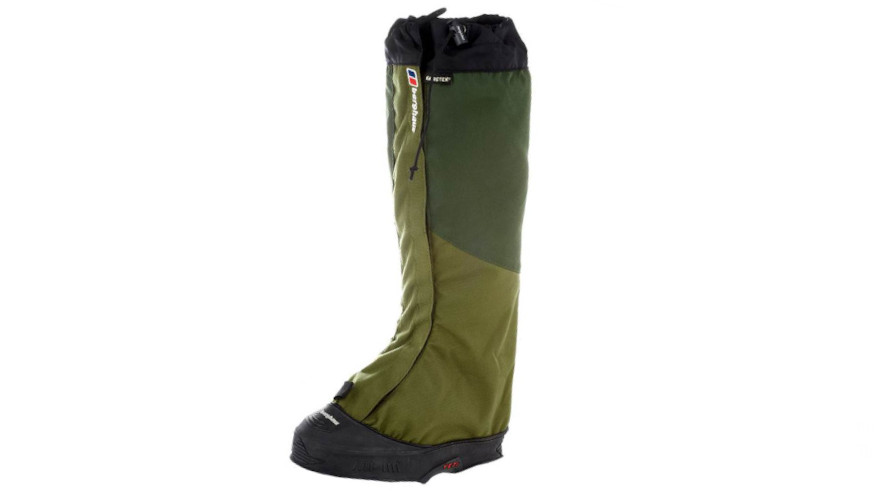
Specifications
Reasons to buy
Reasons to avoid
Completely encasing the foot, ankle and lower leg up to the knee, these gaiters are ideally adapted for crossing streams, bogs and all other sorts of wet, muddy ground. They’re made from ultra-rugged 1,000-denier nylon bonded to a Gore-Tex membrane. This is stitched onto an all-round rubber rand, which is designed to stretch over the sole of a hiking boot. The front closure is a real belt-and-braces affair, consisting of a full-length zip with a Velcro storm flap overlay.
They can be a bit of a struggle to fit though. The key is to pair them with stiff-soled boots so you can get the rubber rand to stretch over both the heel and toe fully, while ensuring the instep strap is correctly positioned. This should ensure a proper weatherproof seal.
Once the Yetis are on, they stay on. As well as shrugging off the worst rain, they’ll also keep your boots dry during stream crossings up to at least mid-shin. The tough nylon fabric is also highly resistant to abrasion, allowing you to plunge through gorse, bracken, briar and bramble without undue concern. But they are more comfortable in cold, wet conditions than milder weather, since the heavy fabric can feel hot and humid. They are also not as supple or as precise fitting as some. Don’t expect a super trim fit, particularly if you have slimmer calves. But ultimately, if you’re looking for maximum protection from the elements plus super-rugged durability, these are some of the best gaiters out there.

Specifications
Reasons to buy
Reasons to avoid
Despite their reasonable price, these gaiters offer three-layer Gore-Tex reliability, plus all the features you’d expect from a general hiking and hillwalking gaiter. They’re made from ripstop polyester with a reinforced lower panel for added resistance to abrasion. They also feature an elasticated band at mid-calf to ensure a closer fit.
They’re a decent all-rounder, being fairly easy to put on and adjust, whilst performing well in terms of waterproofing and breathability. They’re also well-made and while the patterning isn’t quite as advanced as higher-priced gaiters, meaning that the fit isn’t quite as neat, the elasticated section stops them from sagging around the calves.
These gaiters aren’t quite as tough as their high-denier nylon rivals though, and we found the instep strap to be slightly less rugged too. Fortunately, this component is easily removable and replaceable. This extends the lifetime of the product, which can only be a good thing in terms of overall value and also environmental impact. Provided you don’t subject them to too much punishment they’ll still stand up well to everyday hiking and hillwalking.
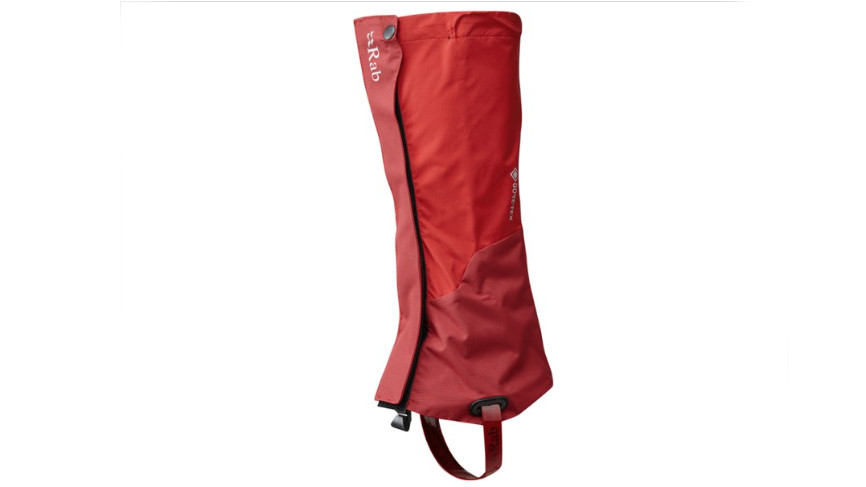
Specifications
Reasons to buy
Reasons to avoid
These technical mountain gaiters from Rab are focused on keeping weight down while prioritizing fit and performance. As such, top-of-the-range Gore-Tex Pro fabric brings optimum waterproofing and breathability. Lightweight 40-denier nylon uppers are combined with more rugged 300-denier nylon panels positioned on the inside and outside of the foot. Ergonomic design and clever patterning ensure a close and precise fit, so these gaiters fit neatly with stiff mountaineering boots and crampons.
The Muztag GTXs do their job without getting in the way, which is really exactly what you want from a pair of technical mountain gaiters. The Gore-Tex Pro fabric keeps your boots and lower legs reliably dry on snow or ice while avoiding too much condensation build-up, even with heavy winter trousers or salopettes. Their only real drawback is that they’re not particularly forgiving if your crampon footwork is a little clumsy. Even the 300D reinforced lower panels aren’t as rugged as some on the market.
Of course, the lighter fabrics keep the weight down and allow for a more precise fit, reflecting their intended use for technical alpine pursuits. If you’re engaged in high-output mountain activities, you’ll appreciate their core attributes: low weight, excellent waterproofing and breathability, and decent all-round protection for winter weather.
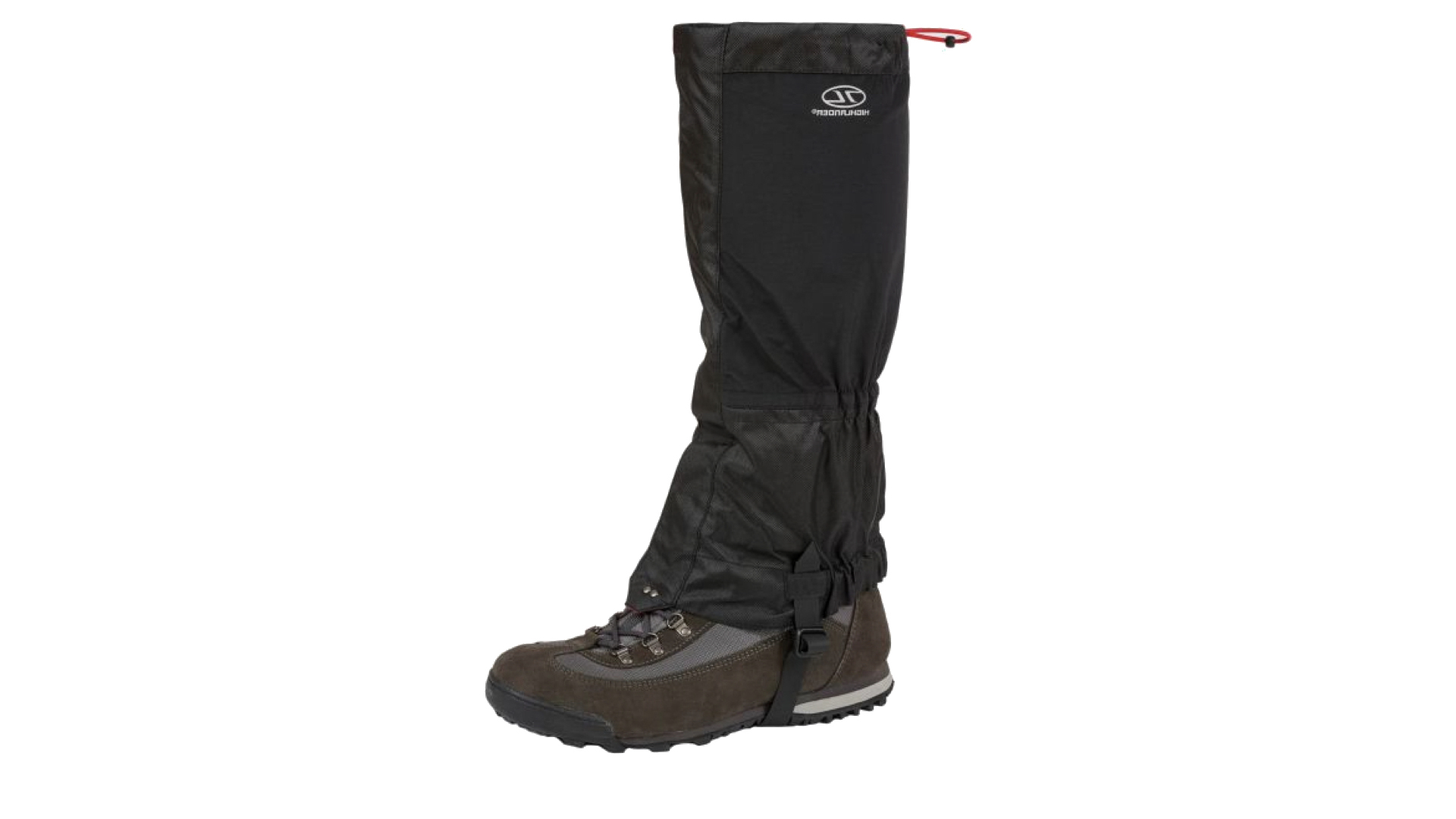
Specifications
Reasons to buy
Reasons to avoid
With a similar design and construction to other entry-level models, these gaiters from UK brand Highlander offer plenty of value. The high cut extends to the top of the calves, promising full protection from mud and muck. They’re also reasonably lightweight, whilst employing nylon fabrics throughout, including a lower section made from robust 420-denier panels. This should withstand plenty of abuse along the trail. A front Velcro closure makes them easy to get on, and they also feature an elasticated band at mid-calf to ensure a closer fit.
The Cuillins work well over wet, boggy ground, saving your boots and trousers from becoming waterlogged and mud-spattered. On test, the gaiters didn’t leak but did occasionally get a bit sweaty. But they are lightweight and not too bulky. The tough nylon fabrics stand up well to everyday hiking and hillwalking, though we worried a little about the long-term durability of the instep strap and plastic buckles. These are still good gaiters, but we felt that with a couple of little upgrades, they could be even better value.
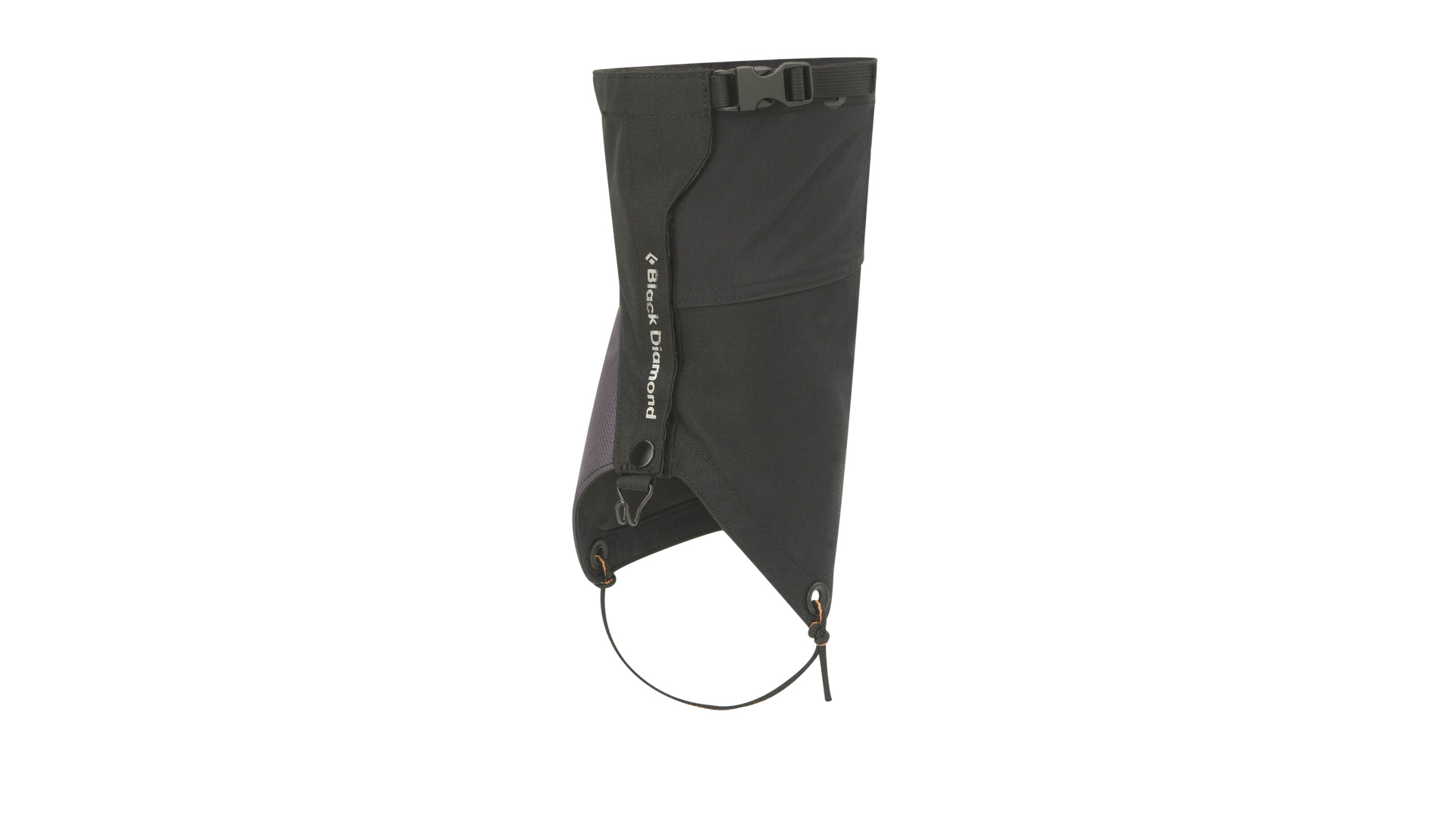
Specifications
Reasons to buy
Reasons to avoid
These mid-height gaiters are durable, lightweight, comfortable and packable. They’re also fast to fit or remove, making them well-suited to mixed terrain where you might not need to wear gaiters all day long. The fabrics are tougher than many high-cut gaiters included in this round-up, with a 600-denier lower panel. They’re fitted with a quick-release buckle on the top cuff, with an adjustable webbing strap that cinches in tightly around the calves.
The gaiters attach to your boots or hiking shoes with a durable metal bootlace hook. Underfoot, a nylon cord is used to secure them around your instep. This component seems to be relatively tough but is unlikely to be as durable as a thicker webbing strap. However, the design means that it is easily replaceable and removable, allowing for quick repair on the trail if necessary.
In terms of performance, they do have limitations. Obviously, any terrain that allows mud or water to overtop the mid-cut height means you end up with wet feet. But for crossing dewy fields, traversing scree slopes or tramping muddy footpaths and dusty trails, they do a good job of keeping out moisture and small pieces of debris, while also fending off mud and muck. They also seem to be well-made, showing little signs of wear and tear even after a couple of months’ regular use. We particularly like the fact that they can be used with a wide range of footwear, from mid-cut hiking boots to lightweight trail shoes. That actually makes them surprisingly versatile, so although they reach their limits in winter conditions, for the rest of the year round they’re a tempting option.
The downside is that although the 70-denier main panel is reasonably durable – and the kick panels are reinforced with even thicker nylon overlays – they still aren’t the most rugged. We did manage to put a crampon point through them during the Scottish winter season, though arguably that was more attributable to clumsy footwork rather than anything else. So, although they might not be the best gaiters for winter use, for general three-season hillwalking, scrambling and mountaineering in wet conditions or tricky terrain, these are a great pick.
How we test gaiters
Our reviewers test gaiters on trails in a wide range of environments and conditions ranging from scratchy scrub to ice and snow. Features (including protection, weight, materials, breathability, comfort and ease of use) are tested against claims made by the brand, and we assess factors such as value for money, durability, compatibility with boots and functionality.
For more details, see how Advnture tests products.
Choosing the best gaiters for you

All gaiters are essentially designed with the same purpose in mind: to keep stuff out of your trail shoes or hiking boots. However, they usually balance protection against overall weight and bulk. So, as with almost all outdoor kit, the best gaiter for you will depend on a number of factors, not least, your intended use and activity.
Fitting and sizing
To work effectively, the best gaiters should be the right size for your boots or shoes. This is vital in order to ensure a close seal between your legs and your footwear. As such, most gaiters are available in a range of sizes that broadly correspond with your shoe size.
When fitting gaiters, try them on with the relevant outdoor footwear – ie, with your regular trail running shoes if you’re shopping for ankle gaiters, or your stiff winter boots when buying mountaineering gaiters. You’re looking for a close but comfortable fit around your legs and calves.
Fabrics
Most gaiters are made from polyester or nylon. Nylon is an inherently stronger fibre for its weight compared to polyester, so most heavy-duty gaiters will be made from either a high-denier polyester or nylon. To further increase their toughness and durability, some of the best gaiters may also employ highly abrasion-resistant fabrics such as Cordura. (For more on fabrics check out What are the most breathable fabrics? and Waterproof versus water-resistant: fabrics and equipment.)
Waterproofing
Ankle gaiters are not always waterproof, since they’re primarily intended for dry and dusty conditions, but hiking and mountaineering gaiters invariably utilize a waterproof coating or membrane to provide protection from water, rain and snow. This may be a PU laminate or an ePTFE membrane such as Gore-Tex, which is bonded to the face fabric and protected with a backer.
Closure
Ankle gaiters may simply stretch over your shoes, but gaiters for hiking and mountaineering are usually fastened via either a zip or a long strip of hook-and-loop material such as Velcro. In addition they’ll have a top drawcord or a strap and buckle to cinch them in. Some of the best gaiters may also be elasticated for a snug fit around the calves.
Instep straps
These secure the lower edge of the gaiters to your boots. This is a common wear point, so look for a thick and robust strap to ensure lifetime durability, and ideally ensure it is replaceable – ie, fixed with a buckle rather than being stitched in – so that if a strap does break, it can be replaced easily.
Lace hooks
These are used to attach the front of the gaiters to the laces of your footwear. Look for a robust plastic or metal hook that is unlikely to snap or corrode.
What to do with your old gaiters
Gaiters take a beating, and eventually something will fail. If you're in the UK, Lancashire Sport Repairs can perform various repairs including replacing foot straps and zippers, and if you're in the US you can carry out some repairs yourself using Tenacious Tape and Seam Grip. Tenacious Tape is available for around $6 on Amazon, and Seam Grip is about $8.
Recycling waterproof material isn't straightforward, but it's worth contacting your local recycling facility to see whether they'll be able to accept your gaiters once they're beyond repair.
- Best waterproof jackets: stay warm and dry all year round
Advnture Newsletter
All the latest inspiration, tips and guides to help you plan your next Advnture!
An outdoors writer and editor, Matt Jones has been testing kit in the field for nearly a decade. Having worked for both the Ramblers and the Scouts, he knows one or two things about walking and camping, and loves all things adventure, particularly long-distance backpacking, wild camping and climbing mountains – especially in Wales. He’s based in Snowdonia and last year thru-hiked the Cambrian Way, which runs for 298 miles from Cardiff to Conwy, with a total ascent of 73,700 feet – that’s nearly 2½ times the height of Everest. Follow Matt on Instagram and Twitter.

